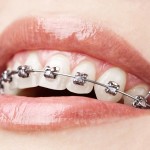
In recent years there has been an increase in the number of adult patients seeking orthodontic treatment. This has been driven by changing aesthetic standards, increased public awareness new treatment approaches and direct to consumer marketing. Traditionally orthodontic treatment had been conducted in growing adolescents in order to exploit any growth potential. This is not the case in adults so alternative approaches are employed which may differ in expectations and treatment durations.
The aim of this review was to compare the duration of fixed orthodontic treatment between adults and adolescents.
Methods
Searches were conducted in the Medline, Embase, Cochrane Database of Systematic, Database of Abstracts of Reviews of Effects (DARE), Cochrane Central Register of Controlled Trials (CENTRAL), Scopus, Virtual Health Library, the Web of Knowledge and the Directory of Open Access Journals, Digital Dissertations, metaRegister of Controlled Trials, WHO, and Google Scholar . Clinical studies comparing the duration of fixed appliance treatment in adolescences and adults were considered.
Two reviewers screened and selected studies with differences being resolved by a third reviewer. Data was extracted by two reviewers and risk of bias was assessed using the Cochrane Collaboration’s RoB 2.0 tool for randomised studies and the ROBINS-I tool for non-randomised studies. Random effects meta-analyses of mean differences (MD) and their 95% confidence intervals (CIs) were conducted and GRADE used to assess the certainty of the evidence.
Results
- 11 studies (1 prospective, 10 retrospective) involving 2969 adolescents and 1380 adults were included.
- 7 studies were private practice-based, 4 in university clinics.
- Studies were conducted in Brazil, Germany, Italy, Malaysia, Nepal, South Korea, and the USA.
- Only 3 studies defined the complexity of the treated cases.
- None of the studies were randomised so prone to confounding but no matching of any kind was used.
- 3 studies were considered to be at moderate risk of bias, 8 were at serious risk.
- 7 studies (1150) patients contributed to the meta-analysis which showed no significant difference in the duration of comprehensive treatment with fixed appliances, MD = − 0.8 month (95%CI; − 4.2 to 2.6 months); P = 0.65; I2 = 92%, between adults and adolescents.
- The certainty of the available evidence was low to very low GRADE for all analysed comparisons.
Conclusions
The authors concluded: –
Based on available evidence from mostly retrospective non-randomized studies assessing adult and adolescent patients, no statistically and clinically significant difference in the duration of comprehensive orthodontic treatment with fixed appliances was found. However, existing studies on the topic have serious methodological limitations and future studies with transparent reporting of treatment procedures, objective outcome assessment, and adequate handling of confounders are needed to robustly tackle this topic.
Comments
The authors have searched a wide range of databases to identify relevant studies and conducted this review in line with recognised standards. Although 11 studies were identified all but one of these was retrospective. The authors also highlight methodological issues in all the included studies that might influence their findings. It is noted that all the included studies reported differences of small magnitude which may or may not be either of importance clinically or to the patient in a course of treatment that on average around two years. Definitive answers will require well designed, conducted and reported prospective studies of appropriate size and duration.
Links
Primary Paper
Abbing A, Koretsi V, Eliades T, Papageorgiou SN. Duration of orthodontic treatment with fixed appliances in adolescents and adults: a systematic review with meta-analysis. Prog Orthod. 2020 Oct 5;21(1):37. doi: 10.1186/s40510-020-00334-4. PMID: 33015719; PMCID: PMC7533275.
